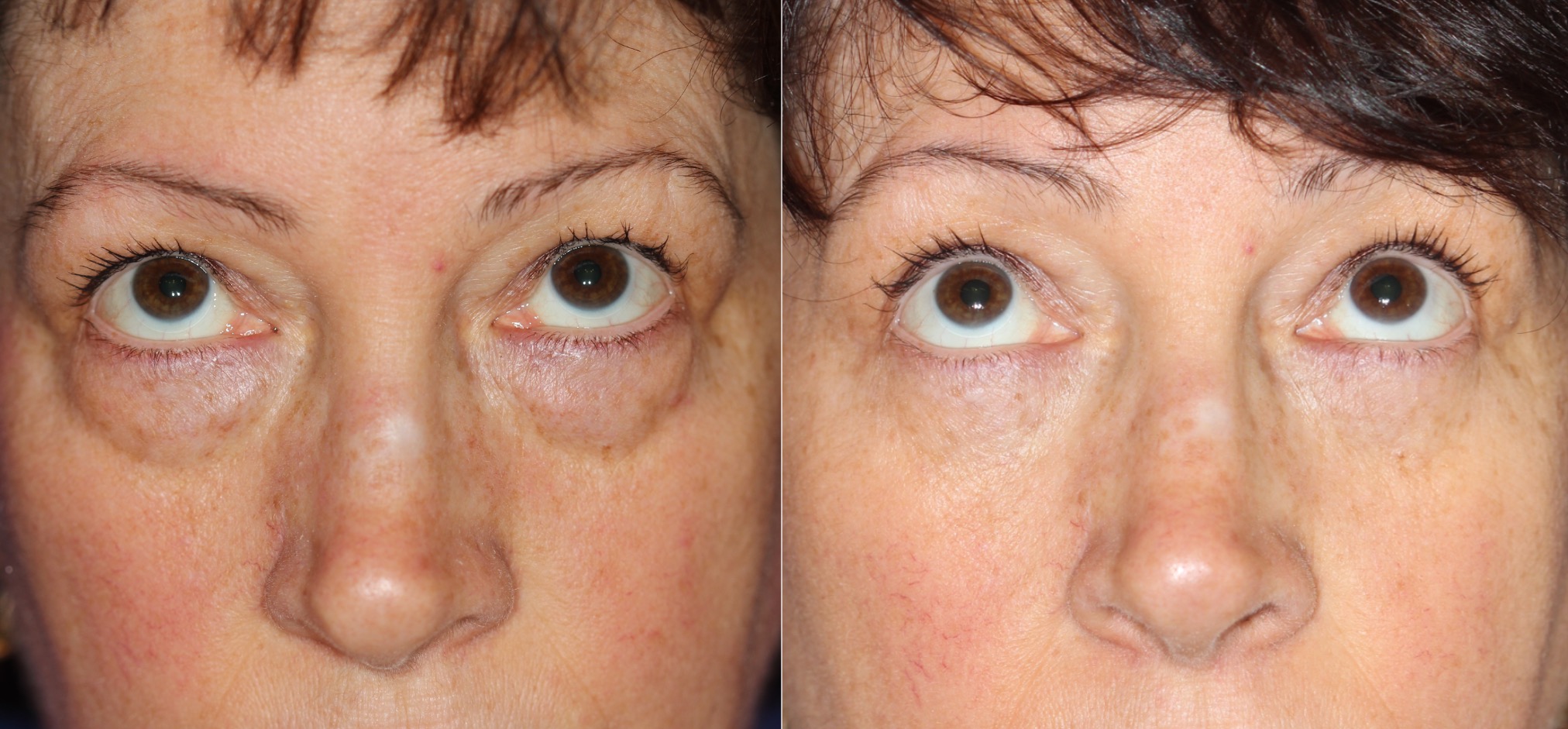
Eyelid Surgery | Blepharoplasty
EYELID SURGERY (BLEPHAROPLASTY)
Eyelid surgery (technically called blepharoplasty) is a procedure to remove fat–usually along with excess skin and muscle–from the upper and lower eyelids. Eyelid surgery can correct drooping upper lids and puffy bags below your eyes – features that make you look older and more tired than you feel, and may even interfere with your vision. However, it won’t remove crow’s feet or other wrinkles, eliminate dark circles under your eyes, or lift sagging eyebrows. Blepharoplasty can be done alone, or in conjunction with other facial surgery procedures such as a facelift, under chin tightening, or brow lift.
If you’re considering eyelid surgery, this information will give you a basic understanding of the procedure-when it can help, how it’s performed, and what results you can expect. It can’t answer all of your questions, since a lot depends on the individual patient. Please contact Dr. Tiller if you have additional questions.
WHO IS A CANDIDATE FOR EYELID SURGERY?
Blepharoplasty can enhance your appearance and your self-confidence, but it won’t necessarily change your looks to match your ideal. Before you decide to have surgery, think carefully about your expectations and discuss them with Dr. Tiller.
The best candidates for eyelid surgery are men and women who are physically healthy, psychologically stable, and realistic in their expectations. Most are 35 or older, but if droopy, baggy eyelids run in your family, you may decide to have eyelid surgery at a younger age.
YOUR CONSULTATION
The initial consultation with Dr. Tiller is very important. Dr. Tiller will need your medical history, so check your records ahead of time and be ready to provide this information.
You and Dr. Tiller should carefully discuss your goals and expectations for this surgery. You’ll need to discuss whether to do all four eyelids or just the upper or lower ones, whether skin as well as fat will be removed, and whether any additional procedures are appropriate.
Dr. Tiller will explain the techniques and anesthesia he will use, the type of facility where the surgery will be performed, and the risks and costs involved.
Don’t hesitate to ask Dr. Tiller any questions you may have, especially those regarding your expectations and concerns about the results.
You will be given specific instructions on how to prepare for surgery, including guidelines on eating and drinking, smoking, and taking or avoiding certain vitamins and medications. Carefully following these instructions will help your surgery go more smoothly.
While you’re making preparations, be sure to arrange for someone to drive you home after your surgery, and to help you out for a few days if needed. Our office can arrange expert professional aftercare services if needed.
HOW IS EYELID SURGERY PERFORMED?
Blepharoplasty usually takes less than one hour depending on the extent of the surgery.
Eyelid surgery can be performed under local anesthesia—which numbs the area around your eyes—along with sedatives, or general anesthesia in which you are asleep.
In a typical procedure, Dr.Tiller makes incisions following the natural lines of your eyelids; in the creases of your upper lids, and just below the lashes in the lower lids. The incisions may extend into the crow’s feet or laugh lines at the outer corners of your eyes. Working through these incisions, the surgeon separates the skin from underlying fatty tissue and muscle, removes excess fat, and often trims sagging skin and muscle. The incisions are then closed with very fine sutures.
If you have a pocket of fat beneath your lower eyelids but don’t need to have any skin removed, Dr. Tiller may perform a transconjunctival blepharoplasty. In this procedure the incision is made inside your lower eyelid, leaving no visible scar. It is usually performed on younger patients with thicker, more elastic skin.
AFTER SURGERY
You will need to keep your head elevated for a few days, and use cold compresses to reduce swelling and bruising. (Bruising varies from person to person: it reaches its peak during the first week, and generally lightens quickly after.) You’ll be shown how to clean your eyes, which may be gummy for a week or so. Dr. Tiller may recommend eye drops, since your eyelids may feel dry at first and your eyes may burn or itch. For the first few weeks you may also experience excessive tearing, sensitivity to light, and temporary changes in your eyesight, such as blurring or double vision.
Dr. Tiller will follow your progress very closely for the first week or two. The stitches will be removed four days to a week after surgery. Once they’re out, the swelling and discoloration around your eyes will gradually subside, and you’ll start to look and feel much better.
GETTING BACK TO NORMAL
You should be able to read or watch television after two or three days. However, you won’t be able to wear contact lenses for a few weeks.
To find out if you are a good candidate or for more information about this procedure or any others, please feel free to contact our office.


